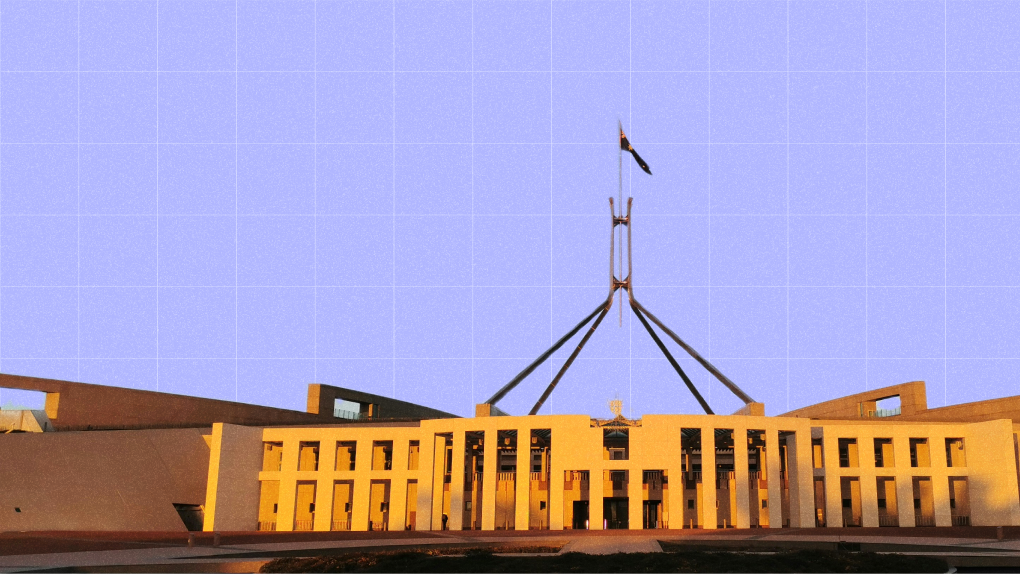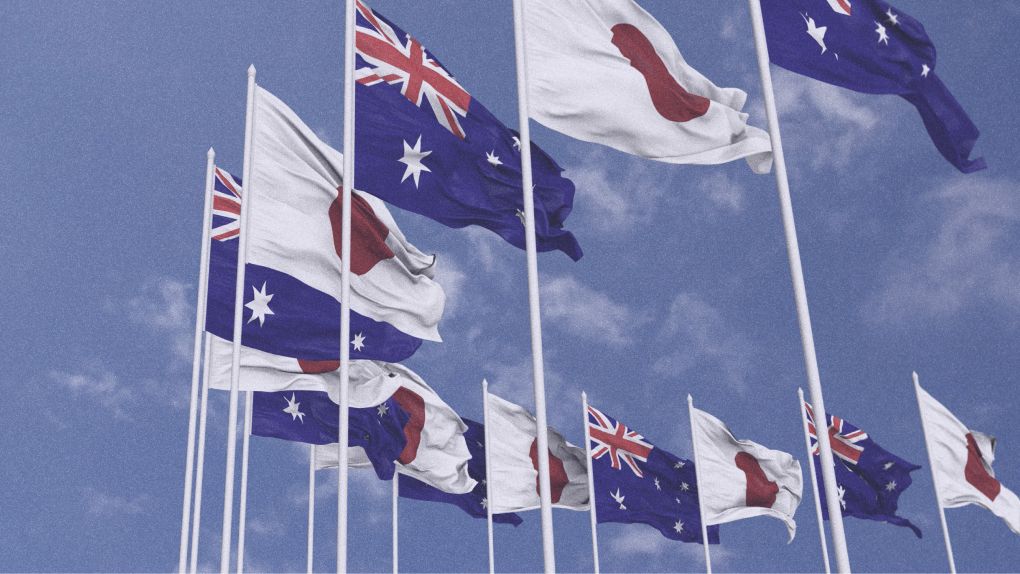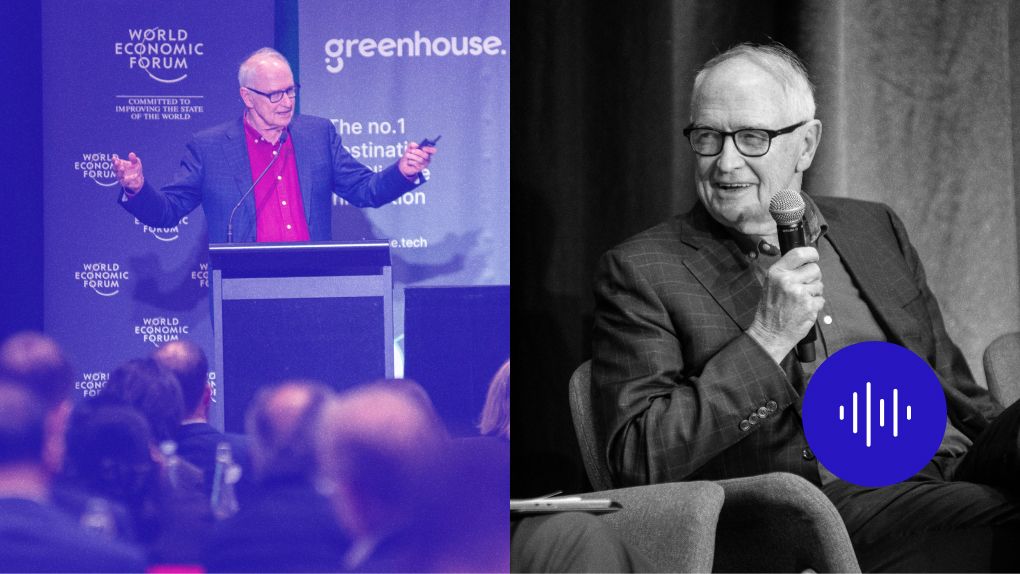An Historic Election
Australia has had insecure governments looking over their shoulders at political threat for one and a half decades. None of the Gillard, Abbott, Turnbull, Morrison and first term Albanese Governments had substantial majorities in the House of Representatives. None ever stood so high in electoral standing that it felt able to take the risk of implementing policy reform in the public interest that could be distorted for their opposition’s political benefit. None had a chance to develop policies in the national interest that take years to mature and to win broadly based electoral support.
At least, that was the perception of leaders of those Governments. They might have done better electorally from stronger definition of policies in the national interest, and bold implementation of them. Or not. It is impossible to argue now that Albanese would have done better electorally with a different approach.
This one and a half decades coincided with structural change in the communications media through which Australians absorb political information. Change favoured short term attack over development of knowledge-based solutions to long-term problems.
Energy policy and Australia’s participation in the necessary global movement to net zero emissions was ground zero for political conflict and policy instability. That has made energy more expensive and less secure. It has been costly to investment and productivity in energy production and use. It has postponed the time at which Australia could take advantage of its extraordinary resources for producing zero carbon electricity, and its comparative advantage in production of energy-intensive goods in the zero-carbon world.
Companies represented here in this energy users’ conference have contributed their fair shares to the dysfunctional political disputation that has disrupted and blocked good policy over the past dozen years. Few companies now would prefer the instability and dysfunction of the past dozen years to the carbon pricing that was working effectively from mid-2012 to mid-2014. But major energy companies contributed to the destruction of a sound, market-friendly approach to removing emissions. With all energy users pushing for something that suited ourselves a bit better, we ended up with an approach to reducing emissions that relies on myriad government decisions, none of them easily predictable in advance by market participants. Somehow we have ended up subsidising coal power generation and with average prices for coal and gas power many times those for the renewable energy that we are meant to be encouraging—while undermining the incentives that were once provided for renewables investment by the Renewable Energy Target. There is extreme uncertainty about future market design and therefore the value of investment in new renewable energy and storage.
The decisive Albanese victory last Saturday creates an historic opportunity to change—for the government, and for business relations with the policy process. It is redolent of the opportunity created by the 1943 election. Curtin’s first Government, formed in 1941, depended on the votes of two Independent members. The 1943 election delivered an overwhelming majority. In a smaller Parliament, the ratio of Government to Coalition Opposition representatives in 1943 was similar to that emerging from the count from last weekend.
The second Curtin Government, and the Chifley Government that followed Curtin’s death at the end of the War, established the economic reform programme that set up Australia for a quarter century of full employment with rising living standards for a growing population. The Chifley Government kept most of its majority in the 1946 election. It was defeated in 1949 after the leading Opposition figure, Robert Menzies, abandoned his United Australia Party with its capture by vested business because he thought it was beyond repair. He established a Liberal Party that could appeal to broader interests and values of the democratic Australian polity.
The Coalition after the election holds less than 10 percent of the seats in Australia’s 8 capital cities, which are home for the large majority of Australians. A twenty first century Menzies would recognise the central role of Coalition approaches to climate and energy policy in the collapse of its electoral support in metropolitan Australia.
The renewed Albanese Government has an opportunity to deliver a twenty first century version of the Curtin-Chifley success. On election night three years ago, the newly elected Prime Minister , Anthony Albanese, expressed his commitment to building Australia as a renewable energy Superpower. On last Saturday’s election night, he restated his commitments to using Australia’s clean energy advantages to build a Future Made in Australia. On last Saturday Night and Sunday morning, Treasurer Jim Chalmers noted the opportunity that a strong electoral position provided to implement this vision, and said that it would not be wasted. Success requires development of policies relying on general incentives for the investments we need to encourage, and policy stability over long periods. Participants in this conference will benefit disproportionately from the Government’s and Australia’s success.
What Twenty First Century Success Would Look Like
The nature and scale of the Australian opportunity is set out in The Superpower Institute’s paper, the New Energy Trade, released last November. Australian exports of goods embodying renewable energy could reduce global emissions by up to 10 percent. They would generate export income for Australians vastly in excess of that provided by the gas and coal industries that will decline as the world moves to net zero emissions over the next few decades. The new industries are large enough to drive restoration of growth in Australian productivity and living standards after the dozen years of stagnation that began in 2013.
Yet there is currently a great deal of skepticism about the opportunity. That is not a surprise. Looking back over my unconscionably long professional lifetime, I am struck by how far-reaching change always takes most of us by surprise. I have seen that in the Japan mining boom of the 1960s, the Hawke reform era from 1983 until the end of the century, and the China Resources boom through the first dozen years of this century.
So it’s no surprise that most Australian business and most Australians are not yet looking forward to the next great Australian economic transformation.
The Superpower transformation requires change in other countries as well as economic policy reform at home.
Change Abroad Supports Superpower Exports
We need other countries to be reducing emissions. We can make a good start in building profitable Superpower export industries if other countries are making a good start with reducing the emissions-intensity of economic activity. Other countries are making that start and continuing despite the Trump administration’s assertion that the science of atmospheric physics is fake news. The Superpower Institute’s paper, “The New Energy Trade”, shows that the countries that matter most to Australian opportunity have high incomes and levels of industrial activity, and low per capita endowments of the resources necessary to make zero-carbon goods. For the time being, these are the economies of Northeast Asia and Europe. They are all committed to and making progress towards net zero emissions.
Does the Trump Administration’s rejection of scientific physics and withdrawal from international climate as well as trade cooperation reduce prospects for the Australian Superpower? Not much, yet. The United States was always going to be broadly self-sufficient in zero-carbon goods, as it has always been in the high-carbon goods of the old economy. Trump protectionism and withdrawal from international climate cooperation does not directly damage Australia’s Superpower opportunity. It would be damaging if it turned European and Northeast Asian economies, or Australia, away from open trade and from net zero emissions. There is no sign of Europe or Northeast Asia turning away. Assertion of European (including British and Scandinavian) policy independence from the Trump United States has confirmed commitment both to open trade and to net zero emissions. Japan, Korea and Taiwan, while understandably nervous about where the Trump disruption will go next, have not moved towards Trump positions on climate. China, already having accelerated its own decarbonisation as the economy moved out of its COVID slump, has seen geo-political as well as economic opportunity in strengthening commitment to international cooperation beyond the US on both trade and climate.
Two important international developments over the past few weeks have reinforced commitment to achieving agreed global climate goals.
The death of Pope Francis reminded much of humanity of the ethical imperatives of action on climate change. Rector of Melbourne University’s Newman College Father Frank Brennan recalled my own praise of the late Pope’s work on climate in my 2015 book Superpower. Celebration of Francis’ work since his death on Easter Monday reminds us that a US or Australian election does not change the ethics of climate change, any more than it changes the physics or the economics.
The second big recent international development is the election victory of the Canadian Liberal Party led by Mark Carney. The Canadian Prime Minister is deeply knowledgeable about the climate change challenge to human prosperity and security. He is deeply knowledgeable about the economics of climate change and its mitigation. His victory has reinforced Canadian commitment to international cooperation on climate change. Prime Minister Carney has emphasised the importance of countries other than the US remaining open to and cooperative with each other on trade and climate change, while encouraging but not waiting for eventual US re-engagement.
Contemporary and emerging international conditions allow Australia to make a strong start in exporting zero-carbon goods. Australian diplomacy and policy can help to preserve and expand those conditions.
Building the Australian Superpower also requires the application of sound economic principles to climate and energy policy.
Domestic Economic Policies to Build the Superpower
If the economic opportunity for the Superpower is so large, why hasn’t the economics already driven development of green iron, green chemicals and other zero-carbon industrial production?
The answer is in simple, uncontested economics. Economics that has been in good textbooks for a hundred years. This economics has been accepted by economists like Friedman and Hayek at the extreme free market end of the debates about the role of Government in economic development.
We haven’t yet seen much investment in the industries of the future despite Australia’s advantages, because the policy foundations have not been laid. That is because we have not had financial incentives for innovation in line with the benefits to society. And we have not had the green premium on zero-carbon production that recognises the advantages to us all from reducing greenhouse gas emissions.
Markets work wonders for economic development whenever and wherever trade brings benefits to society similar to the benefits accruing to the contracting parties. But they don’t work for economic development if and when business transactions confer large benefits to firms or people who are not parties to the market exchange, or impose large costs on parties outside the exchange.
These are “externalities”—benefits or costs not captured by the parties to the exchange. Two large externalities are important in the transition from the fossil carbon to the zero-carbon economy. There is a positive externality associated with innovation—the development of new technologies, business institutions and products. There is a negative externality from emission of greenhouse gases into the atmosphere.
Innovation generates benefits that the investing firms cannot capture for themselves. Pioneer investors in new ways of doing things show others what works and what is not worth trying. They make costly mistakes that followers avoid. They generate knowledge from which followers benefit.
Investments that embody “First-of-a-Kind” use of a technology can cost many times as much as applications when the technology is well established. So sound economics has taught for a hundred years that we don’t get enough innovation unless governments provide financial support for it.
Markets won’t work for economic development unless governments block economic transactions that impose large costs on others, or apply taxes that recoup for society the damage done to others, or subsidise competing activities. There is a negative externality—a cost imposed on others--when a firm releases carbon dioxide into the atmosphere.
Australia over the past three years has begun to lay the policy foundations for the Superpower. The economic principles are set out clearly and well in the National Interest Framework for A Future Made in Australia released by the Commonwealth Treasury with the 2024 budget. We have made a start in compensating for the carbon externality with the hydrogen production credit. We have made a start with compensating for the iron innovation externality with the funds put aside for early green iron projects. But to utilise fully our economic opportunity we will need mechanisms for making green premia equal to the social benefits from replacing emissions-intensive with zero-carbon activity generally available. To utilise fully our economic opportunity we will need generally available mechanisms to provide fiscal support for innovation at levels that support the external economic benefits from increased knowledge. Investment follows if sound policies are seen as being stable for long periods ahead.
Incentives will unlock the magic of the market in expanding investment and innovation if they are provided in general form with stability over long periods, with conditions known in advance by all market participants. General grants for innovation that are available to all firms that meet specified conditions are far superior to those that depend on officials’ discretion and artificial “auctions”. Green premia are most cost-effective if they are available to all market players who meet specified conditions. The emissions trading scheme applied from mid-2012 to mid-2014 and to be linked to Europe from 1 July 2014, worked exactly as anticipated in promoting economic efficiency and reducing emissions. After that, the Renewable Energy Target established by Prime Minister John Howard in 2001, and strengthened by Prime Minister Kevin Rudd in 2011, and the hydrogen tax credit introduced by Prime Minister Anthony Albanese in 2024, are examples of market-enhancing general incentives for low-carbon production.
Some other countries have done better than Australia. The European Union, the UK and other European countries are closest to getting it right, with carbon pricing closer to the social cost of carbon, and large financial support for innovation. Australia’s major trading partners in Northeast Asia—China, Japan and Korea—were always strong on support for innovation. They were once laggards on green premia, but are edging towards economically rational policies.
To establish sound policies, we all have to step back from the clang of climate and energy politics in recent years. We have to provide space for development of comprehensive sets of policies that support strong progress towards net zero emissions by 2050, and reliable and secure power supply at the lowest sustainable costs. We are fortunate that the Government during the last Parliament initiated important work on development of those sets of policies. The Nelson Committee, established by the Commonwealth Government in 2024, is working on post-2030 electricity market design. The Productivity Commission is working on separate references given to it in 2024, on how to restore dynamism and productivity growth to the Australian economy, and how to efficiently deliver the transition to net zero emissions. In addition, the private and independent Superpower Institute is analysing the nature and extent of Australia’s Superpower opportunity, and working on the policies that will efficiently support the development of the new zero-carbon export industries. These streams of work will support public discussion of policy choice over the remainder of this year.
I suggest that we discuss the results of the work as it comes out from the perspective of our shared interests in secure and reliable energy supply to established and new industry. Lets allow the public interest to occupy the central place in our energy policy discussion for the first time in nearly one and a half decades.
Our extraordinarily rich renewable energy resources have allowed us to make considerable progress despite the policy imperfection and instability of the past dozen years. We have become the developed country with the largest share of low-cost solar and wind power in the world. In parts of the country, we have led the world in demonstrating how low-cost solar and wind power can supply the whole of a region’s power requirements for extended periods with high security and reliability. We are home to the world’s largest investment boom in grid-scale batteries to stabilise a power system dominated by variable renewable energy.
Get the policy foundations right, and we will be surprised how rapidly and cheaply we move to zero net emissions in the energy sector. And we will be surprised how quickly growth in energy-intensive export industries drives productivity and output growth through a major transformation of the Australian economy. By mid-century, the electricity system driving Australian economic development can be 10 times and more as large as that which powers Australia today.
Lets make sure that our thoughts about policy are big enough to allow that future to emerge.
Rumours of Hydrogen’s Death are Exaggerated
Several of the most important potential Superpower industries use hydrogen made with renewable energy. Recent announcements that many prominent hydrogen projects have been closed or shelved has generated talk that hydrogen is dead, or too underdeveloped for independent life. Like Mark Twain’s death, those rumours are exaggerated.
Hydrogen is a large part of Australia’s Superpower story. It is worth taking a closer look. I can apply personal experience to that look. ZEN Energy, the company of which I am a Director, has been working on what we think are Australia’s most advanced industrial projects producing zero-carbon goods from green hydrogen. One is in South Australia, to produce green iron.
Let’s be clear from the start that hydrogen’s main role in Australia’s economic future was always going to be as an input into industry, and not as an export in liquid form like LNG.
In the fossil carbon economy, Japan, Korea and China import huge quantities of Australian iron ore and coal and put them together to make iron metal, releasing greenhouse gases as a waste. Conversion of Australian iron ore into iron and steel produces more than three times the carbon emissions as everything we do in Australia.
Why didn’t we make iron at home in the fossil carbon economy? That’s partly transport economics. It costs less to use Australian metallurgical coal in Kobe, Pusan or Shanghai than in Whyalla. And it’s partly because, unlike other large exporters of methane gas, we choose not to make gas available cheaply for industrial use at home.
Hydrogen is much harder and more expensive to convert into a liquid than methane gas and much harder and more expensive to ship across the ocean. Unlike Australian gas and coal, hydrogen for industry would be several times as expensive in importing countries as in Australia. As Reuben Finighan set out in the Superpower Institute’s paper “The New Energy Trade” last November, only a few rich and geographically small economies would ever carry and justify those costs. The high costs of international transport for hydrogen mean that its main economic value is in producing here in Australia many of the products that are currently made overseas with Australian coal and gas. Foremost amongst these is the reduction of iron and some other mineral ores into metals, and the use of hydrogen with sustainably harvested biomass in production of green transport fuels and some other chemical manufactures.
Although it was peripheral to the Superpower narrative, direct export of hydrogen and its carriers dominated the hydrogen hype that emerged a few years ago. That was a mistake and a pity. The bursting of that hydrogen bubble was inevitable and necessary. The bursting of the bubble returns the emphasis to the use of hydrogen in zero-carbon industrial production.
Apply sound economic principles to policy and the first hydrogen-based investments in new export industries are ready to go now. Hydrogen-based iron-making is ready for investment now in the Upper Spencer Gulf of South Australia.
Whyalla will have a sustainable future in iron-making based on green hydrogen, or it will have no sustainable future at all.
The existing Whyalla steel mill produces about one million tonnes of products when it is working well at full capacity. It could be supplied with a million tonnes per annum of green iron using green hydrogen by using only existing electricity transmission, water, port and urban infrastructure. It could therefore be producing iron metal on the earliest possible timetable for an electric arc steel furnace installed at Whyalla. Once in place, no-one will ever again consider investment in extending the life of old or building new coal-based or gas-based iron-making in the 5 states covered by the National Electricity Market. The world steel industry’s eyes will turn to Australia as the locus of much of the solution to decarbonisation of an industry accounting for 8% of global emissions. We will have placed Australia on the escalator to the Superpower.
Incidentally, the establishment of a one million tonne green iron plant in Whyalla will make a major contribution to achieving high reliability in a South Australian electricity system that is mainly supplied from wind and solar. The iron and steel plants will use electricity at around half the average flow of the current South Australian system. It will be a highly flexible load, drawing on power from the grid when it is abundant and cheap, and contributing large amounts of power when it is scarce and valuable.
Using Australia’s Strengths After the 2025 Election.
Saturday’s election has not changed in any way the physics, economics or ethics of climate change. What it has changed is the capacity of Government in Australia to establish and maintain policies that will allow us to reduce domestic emissions in line with our international obligations. It has strengthened the capacity of Government to introduce and sustain policies that support Australia in contributing disproportionately to global decarbonisation by supplying goods embodying renewable energy that the high-income economies of Northeast Asia and Europe cannot supply at reasonable cost from their own resources. It has opened an opportunity for Australia to leave behind a dozen years of stagnation of living standards, and to enter a new era of full employment with rising incomes for an increasing population.
In the new circumstances of secure Federal Government in Australia, the energy industries will do well from supporting Government in developing policies that secure Australia’s interest in a stable climate, its interests in rising living standards and the ethical interests of most of its citizens.
Ross Garnaut
Director
Ross Garnaut AC is a renowned economist specialising in development, economic policy and international relations. He is Professor Emeritus at the University of Melbourne and a Fellow of the Australian Academy of Sciences. His contributions to trade policy and climate change have made him a trusted adviser to successive Australian governments.




